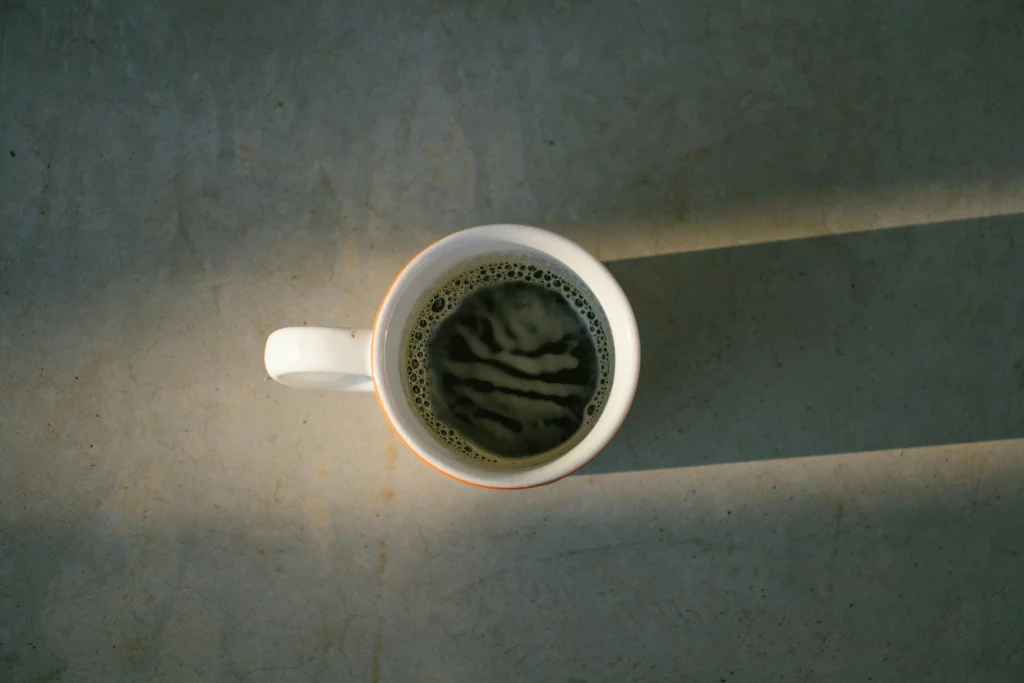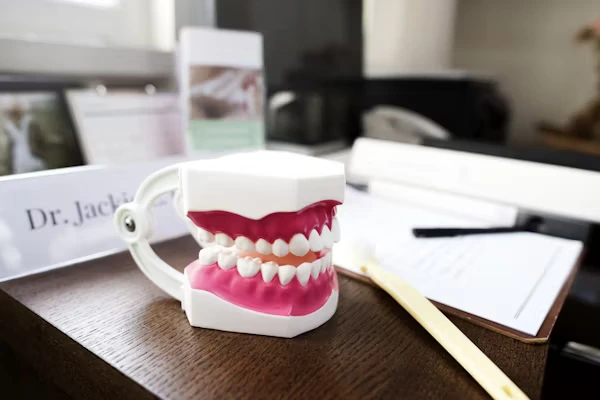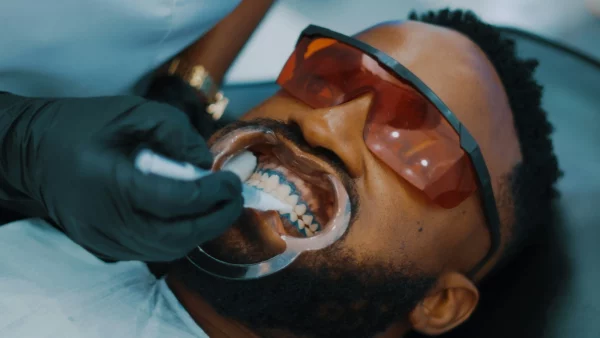Teeth whitening presents a practical solution for individuals who regularly consume coffee and wish to address the resulting dental stains without sacrificing their daily beverage. While in-office procedures can deliver rapid improvements, long-term maintenance of a brighter smile requires more than a single treatment. Understanding the chemical effects of coffee on tooth enamel is essential, as is evaluating the efficacy of various teeth whitening methods both professional and over-the-counter. Additionally, incorporating consistent oral hygiene practices is crucial for sustaining results.
This article will explore the causes of discoloration, review whitening options suitable for frequent coffee drinkers, and offer strategies for preserving whitening outcomes over time. Advancements in teeth whitening technology now provide both effective stain removal and sensitivity protection, allowing individuals to maintain aesthetic results without significant lifestyle changes. Ultimately, with informed choices and appropriate care, it is entirely feasible to enjoy coffee while retaining a bright, confident smile.
Teeth Whitening and Coffee – Why Stains Happen

Coffee stands out as a primary factor in dental staining, and not without reason. The beverage contains dark pigments known as tannins, which have a strong affinity for tooth enamel. Over time, these pigments can cause noticeable yellowing or browning. Interestingly, even moderate daily consumption can lead to residue buildup that diminishes the brightness of one’s smile.
Additionally, the temperature of hot coffee temporarily expands the enamel’s pores, making teeth even more susceptible to staining agents. The common practice of adding cream or sugar doesn’t help matters either; these additives can contribute to plaque formation, which further intensifies discoloration. Understanding the mechanisms behind coffee-related staining is essential when selecting an effective teeth whitening strategy and maintaining long-term dental aesthetics.
How Coffee Affects Tooth Enamel
Coffee contains tannins—these are pigmented compounds that can adhere to the microscopic pores present in dental enamel. With repeated exposure, these pigments gradually penetrate deeper, leading to visible yellowing or browning of the teeth. Additionally, consuming coffee at high temperatures may temporarily soften enamel, making it even more susceptible to staining. Frequent sipping throughout the day limits the natural cleansing action of saliva, allowing these pigments to accumulate and intensify discoloration over time.
The Role of Daily Habits in Tooth Discoloration
Prolonged consumption of beverages without intermittent water rinses and aggressive brushing techniques can compromise dental enamel, increasing susceptibility to staining. The inclusion of sugary syrups or flavored creamers further introduces acids that exacerbate enamel erosion. Over time, these factors collectively establish conditions favorable for persistent, deep discoloration. Conversely, adopting simple preventative measures such as drinking water between sips, utilizing a straw, or rinsing with water following consumption can markedly diminish stain accumulation and aid in maintaining enamel integrity.
Can Teeth Whitening Treatments Remove Coffee Stains?
Both peroxide-based gels and laser-assisted teeth whitening systems demonstrate notable efficacy in breaking down chromogens deposited by coffee consumption. The effectiveness of these methods largely depends on the concentration of the whitening agent and the duration of application. Professional treatments, in particular, tend to penetrate the enamel more thoroughly than over-the-counter alternatives, making them better suited for addressing persistent, long-standing stains. Still, it should be noted that no whitening treatment offers permanent results. Resuming coffee intake shortly after treatment will likely result in the reappearance of stains. Therefore, regular maintenance and preventive habits are essential for sustaining teeth whitening outcomes.
Best Teeth Whitening Options for Coffee Drinkers

Individuals who consume coffee regularly require teeth whitening interventions that extend beyond superficial stain removal; they need solutions that penetrate deeply and maintain effectiveness despite habitual exposure. It’s important to recognize that not all whitening methods are equivalent, some yield rapid but temporary results and necessitate ongoing maintenance, while others work gradually with reduced risk of sensitivity. The optimal approach depends on the severity of staining, personal enamel sensitivity, and frequency of coffee intake. In the following analysis, I will outline the most efficacious teeth whitening strategies for coffee enthusiasts and discuss methods for sustaining dental brightness between treatments.
In‑Office Whitening for Fast Results
Chairside whitening procedures involve the application of high-concentration peroxide agents under the direct supervision of a dental professional. To protect the gingival tissues, a barrier is carefully applied, and then either a specialized light or controlled heat is used to enhance the breakdown of dental stains. Patients typically observe a noticeable improvement sometimes between two and eight shades lighter in less than an hour. This method is especially suitable prior to significant occasions such as weddings, professional photo sessions, or important business meetings. Nevertheless, it is crucial for patients to adhere strictly to recommended aftercare during the initial 48 hours post-treatment, given that the enamel remains highly susceptible to re-staining during this period.
At‑Home Whitening Kits That Work
Custom trays provided by dental professionals offer an effective balance between ease of use and whitening results. These trays utilize a milder bleaching gel and are typically worn for thirty minutes to two hours daily, over a period of one to two weeks. Because the trays are custom-fitted, the gel remains in contact with the teeth and is less likely to irritate the gums. In contrast, over-the-counter whitening strips are a more affordable alternative, but they usually require additional applications and tend to produce subtler changes in tooth shade.
Natural Remedies vs. Professional Treatments
Baking soda, coconut oil pulling, and charcoal-based pastes have gained significant popularity in recent online discourse. While such natural approaches may assist in removing surface-level discoloration, they lack the efficacy of peroxide when it comes to addressing intrinsic stains within the tooth structure. Charcoal, despite its current trendiness, poses a risk of enamel abrasion if utilized excessively. As such, these natural remedies are best regarded as supplementary interventions rather than the primary means of dental whitening.
How to Maintain Whitening Results with Coffee in Your Routine
Achieving a whiter smile is just the start maintaining that brightness while still enjoying coffee requires consistent daily habits. Fortunately, it is not necessary to eliminate coffee from your routine to preserve your results. Practical strategies such as rinsing your mouth with water after drinking coffee, using a straw, and limiting the duration of coffee consumption can effectively minimize staining. Additionally, incorporating a low-abrasion whitening toothpaste and scheduling periodic touch-up treatments will help prevent discoloration from returning. With diligent care, it is entirely feasible to enjoy both a bright smile and your coffee.
Best Practices for Drinking Coffee Without Staining Teeth
To preserve the effects of teeth whitening while still enjoying coffee, a few practical measures can be effective. Consuming coffee within a fifteen-minute window reduces the duration of contact with teeth, thereby minimizing the risk of staining. Incorporating milk is beneficial, as the casein proteins in dairy products bind to tannins, diminishing their ability to discolor enamel. When opting for iced coffee, utilizing a straw helps prevent direct exposure of the front teeth to staining agents. Additionally, rinsing with water immediately after coffee consumption assists in removing residue, further protecting the brightness of your smile.
Whitening Toothpastes and Rinses
To maintain dental brightness without causing undue wear, select toothpastes containing low-abrasion agents such as gentle peroxide or hydrated silica. It’s important to verify the presence of the ADA Seal, which signifies safety and efficacy. Whitening mouthwashes may contribute modestly by providing a small dose of peroxide throughout the day, but they are most effective when incorporated into a comprehensive oral hygiene routine rather than used in isolation.
How Often Should You Whiten as a Coffee Drinker?
Individuals who regularly consume coffee typically require professional whitening treatments approximately every six to twelve months. Supplementary at-home maintenance such as monthly use of dentist-recommended whitening trays or strips can help prolong results. Of course, the optimal frequency depends on personal factors: tobacco use, acid reflux, and naturally thin enamel can all increase the risk of stains and discoloration. Dental professionals will evaluate both shade relapse and tooth sensitivity to tailor a maintenance plan suitable for each patient’s needs. With proper adherence to such a regimen, it remains feasible to maintain dental brightness while continuing daily coffee consumption.
Teeth Whitening Near Me – Choosing the Right Provider
Selecting an appropriate provider for teeth whitening is not merely a matter of proximity or cost; it involves prioritizing safety, efficacy, and sustainable outcomes. In the current landscape, individuals encounter a multitude of options, ranging from established dental practices to non-specialist beauty spas. The distinction is critical: a qualified dental professional possesses the expertise to assess enamel integrity, evaluate the degree of staining, and account for individual sensitivity factors essential to tailoring an effective treatment plan.
Furthermore, dental practitioners are equipped to monitor the procedure, addressing any complications that may arise and ensuring patient comfort throughout. When seeking teeth whitening services, it is therefore imperative to consider both clinical credentials and a provider’s commitment to oral health, not solely cosmetic enhancement. This section will detail the fundamental criteria for identifying reputable whitening services in your vicinity.
What Sets Graham Park Dental’s Whitening Services Apart
Graham Park Dental utilizes an integrated approach, combining in-office laser whitening with personalized take-home trays to support ongoing maintenance. Following treatment, a desensitizing varnish is applied to minimize post-procedure sensitivity, allowing patients to resume everyday activities such as drinking coffee without discomfort. Additionally, their proprietary app enables users to track shade changes and conveniently schedule follow-up treatments as needed.
Frequently Asked Questions (FAQs)
1. Can I drink coffee right after whitening my teeth?
It’s best to wait at least 48 hours after whitening before drinking coffee. During this time, the enamel is slightly dehydrated, which temporarily exposes microscopic pores that absorb dark pigments more easily. Drinking coffee too soon can lead to quick re-staining and diminish your results. If you really need a caffeine fix, opt for iced coffee through a straw and rinse your mouth with water right after. After the first two days, your enamel begins to rehydrate, making it less vulnerable to staining. With proper hygiene and moderation, coffee won’t undo your whitening progress overnight.
2. How often can I whiten my teeth if I drink coffee daily?
Professional in-office whitening treatments are typically limited to once or twice a year to prevent tooth sensitivity and protect enamel. For maintenance, many dentists recommend custom at-home trays with prescription-strength gel, used monthly for a few nights in a row. This approach helps boost brightness without overexposing teeth to harsh ingredients. It’s important to avoid frequent use of over-the-counter products, as they can thin enamel and make teeth more prone to staining over time. Following a dentist-guided plan ensures safe, effective whitening with long-lasting results. Trusting your provider’s recommendations is key to preserving both your smile and your enamel health.
3. Are some types of coffee worse for staining than others?
Yes, different types of coffee can affect your teeth in different ways. Dark roasts contain more chromogenic compounds, which are responsible for deeper staining. Cold brew tends to be less acidic, which may reduce enamel roughness, but it still carries plenty of pigment. Adding milk can help minimize staining, as the proteins in dairy bind to tannins and reduce their ability to cling to enamel. Brewing methods like paper-filtered drip also remove some of the oils that hold color. Still, no matter your coffee choice, moderation and rinsing with water after sipping are your most reliable defenses for preserving a bright smile.
4. What’s the best way to reduce stains between whitening treatments?
To keep your smile bright between whitening treatments, combine quick water rinses after coffee with sugar-free gum to boost saliva flow, and use a low-abrasion whitening toothpaste daily. Regular professional cleanings every six months help polish away early pigment buildup before it sets in. If you notice surface stains creeping back sooner, a simple two-day touch-up with your custom trays can often restore brightness without needing a full in-office session. These small habits go a long way in preserving your whitening results while still enjoying your favorite brew.
5. Do whitening strips work for heavy coffee stains?
Whitening strips can help reduce coffee stains, but results vary depending on the severity of discoloration. They contain lower concentrations of peroxide compared to professional trays, so deeper stains often require multiple applications. Strips also tend to miss the curved edges near the gumline areas where coffee pigments commonly collect. For more stubborn discoloration, strips can be used as a primer, followed by a dentist-supervised whitening gel to ensure even coverage and longer-lasting results. This combination approach offers a more thorough and effective lift in tooth shade.
You don’t have to choose between a morning espresso and a photo‑ready smile. Schedule a teeth whitening consultation at G&P Dental today, and let our team craft a plan that matches your coffee habits and sensitivity level. With professional guidance, powerful yet gentle products, and practical daily tips, your bright grin can outshine even the boldest brew. Book online or call our Frederick clinic now, your next cup deserves a dazzling backdrop.


